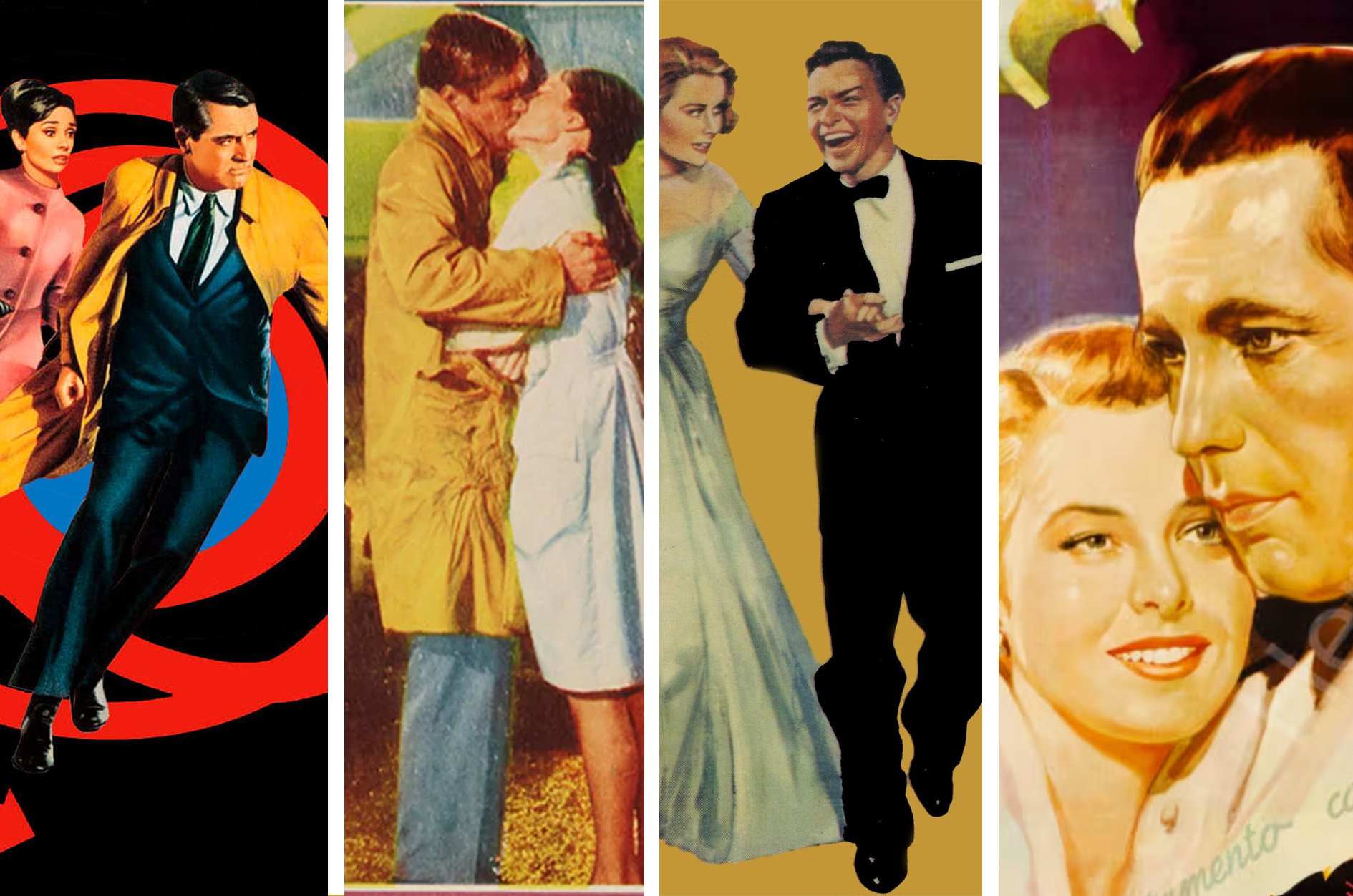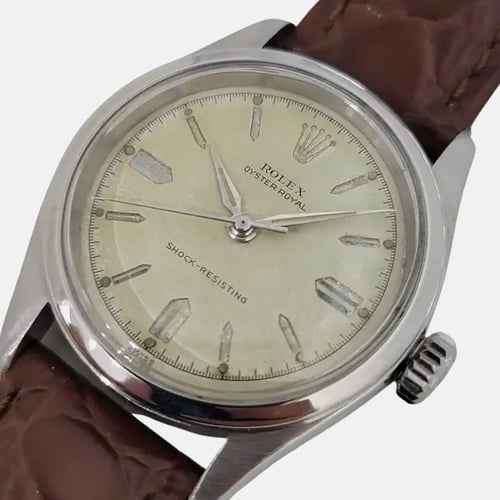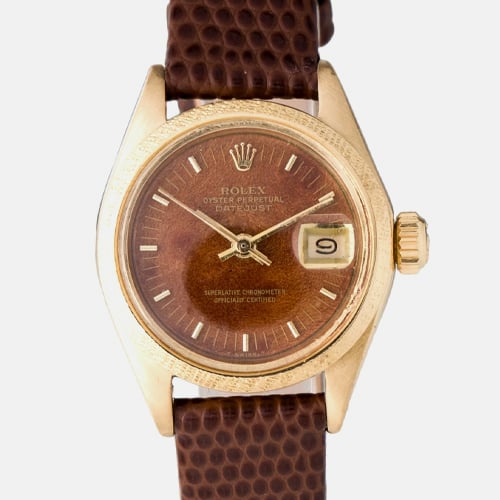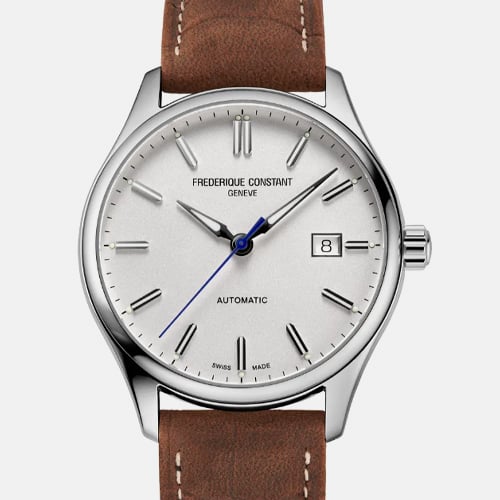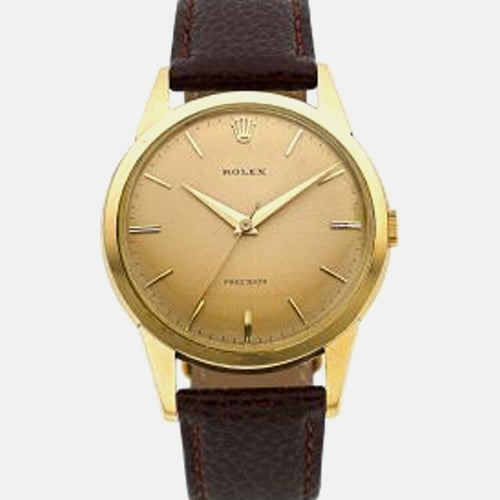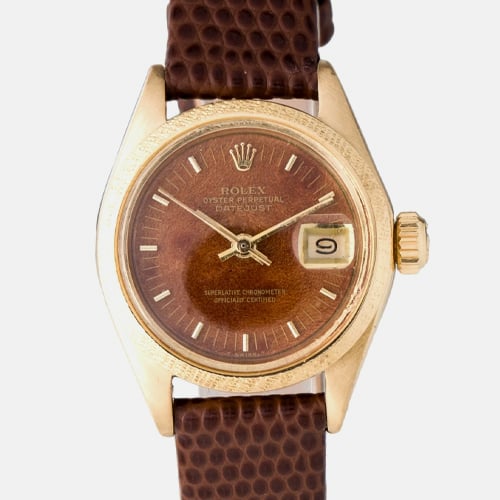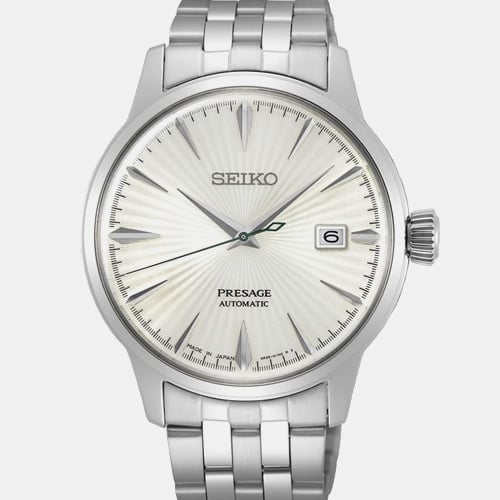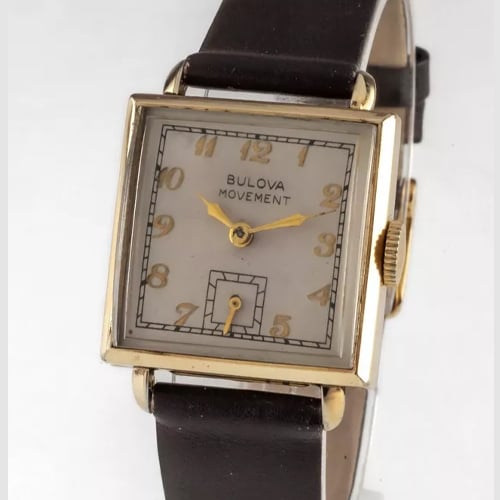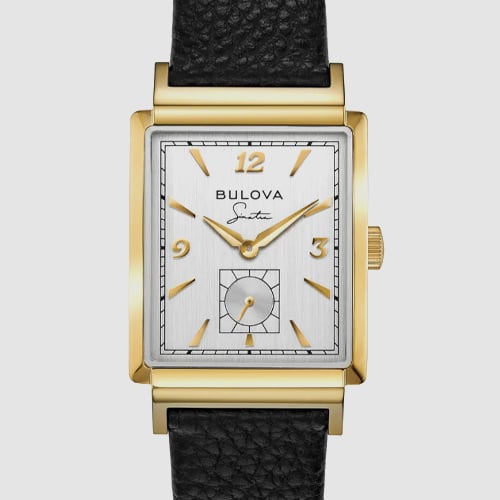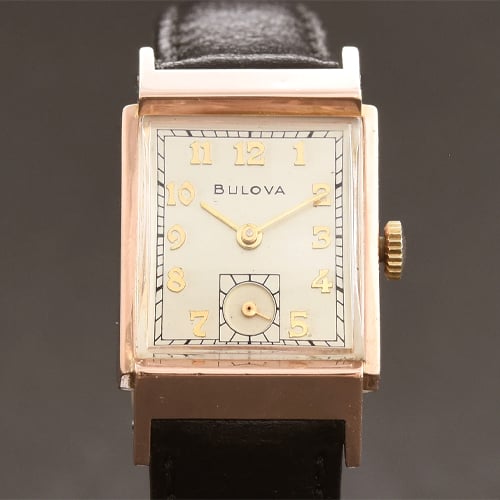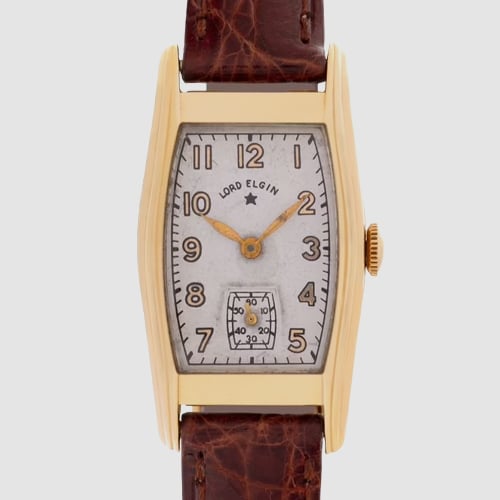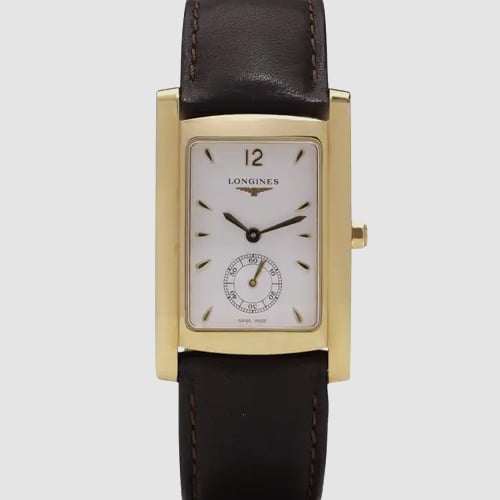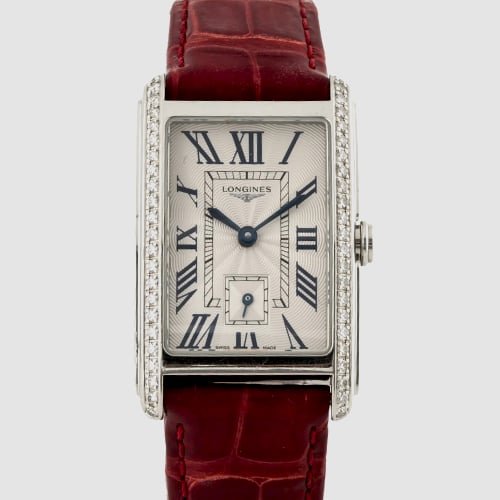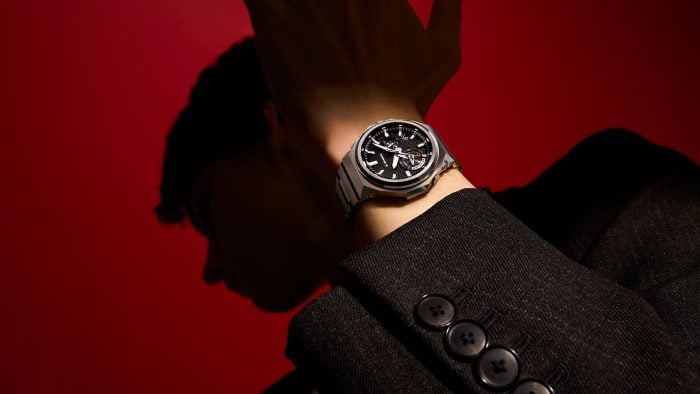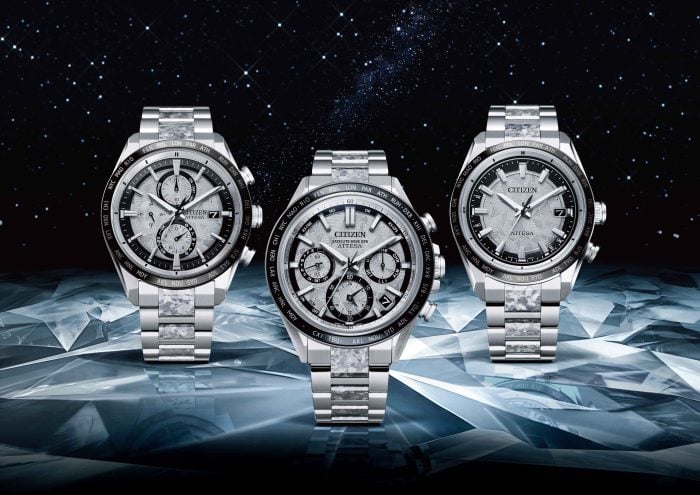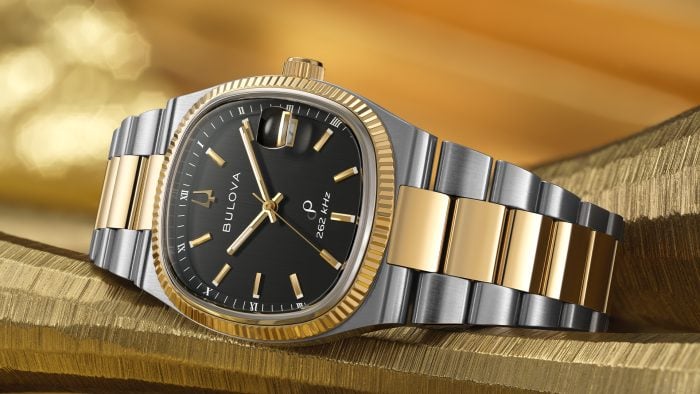Some unidentified timepieces in film are just as character-driven as Bond’s Submariner. This leaves the door provocatively open for educated guesses and fun theories. Here are mine.
Rear Window is a mystery movie that sparked a real-life mystery. I, like many, became obsessed with Jimmy Stewart’s anonymous Tissot watch with its calligraphic typeface. Formerly dubbed the “referenceless Tissot,” we now know that it’s a 6440-3.
It contrasts Bond’s Submariner, a Rolex on an aspirational archetype. Everyman Jimmy Stewart wears an honest, functional, entry-level brand, the model of which mattered so little that it got lost in time. And like Stewart’s character, I spiraled over this.
That case is closed, but there are other fascinating, story-pertinent mystery watches in film. I’ve hypothesized four potential identifications. Sure, it’s a less Hitchcockian approach than spiraling, but these cases are still equally as obsession-worthy as that Tissot was.
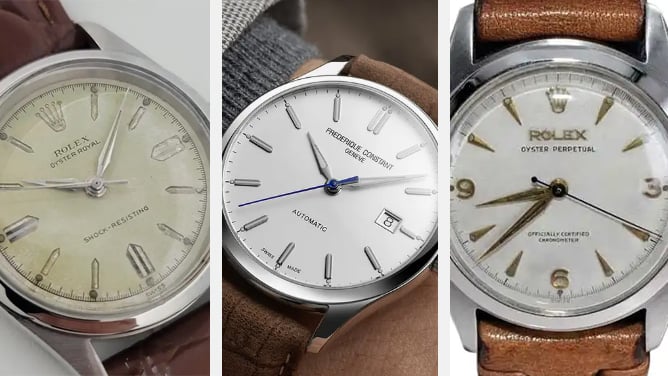
Brian Cruikshank’s Watch in ‘Charade’
I don’t want to burst your bubble if you acquired a Rolex Royal 6426 or 4444 because you wanted to be Cary Grant from 1963’s Charade. But, and I’m truly sorry, I don’t think either of those is it.
I’m quite sure it’s a 6244. Pro-tip, by the way: The Royal is a little-known cheat code if you’re looking for a vintage Rolex well under 5k.
During a close-up scene, the indices are clearly elongated, like the uniform batons of many 6426s. However, some noticed that the cardinals seem differently shaped than the other indices, suggesting reference 4444.
The 1950s 6244s flaunt all-baton indices with double-barrel cardinals, a visual middle ground between reference 4444 and 6426.
Why wouldn’t Cruikshank wear an older watch? His gentleman-level age is a defining characteristic, especially in regard to the romantic interplay with younger protagonist Reggie Lampert. He also bore four different aliases, Cruikshank’s true identity revealed only in the film’s last two minutes. A watch with uniform, homogenous indices wouldn’t suit.
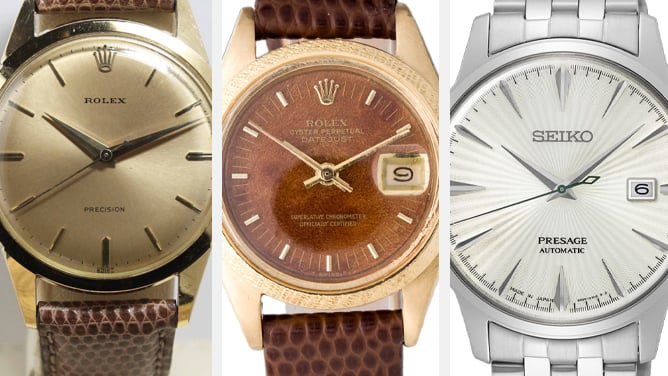
Paul Varjak’s Watch in ‘Breakfast at Tiffany’s’
Breakfast at Tiffany’s famously uses fashion narratively. George Peppard’s Paul Varjak wears a round dress watch on a square-buckled, black leather strap. Peculiarly, he wears it on his inner right wrist.
While I so badly wanted him to be sporting a Grand Seiko J14070, it’s likely a 1960 Rolex 9004. Mrs. Failenson, who foots Varjak’s bills for, ahem, companionship, presumably bought it.
See, Grand Seiko launched in Japan in 1960, and the 1961 film portrays an aesthetically cosmopolitan Manhattan. I love the woman at Holly Golightly’s party wearing full Chinese garb and Holly’s obsession with Brazil. Mickey Rooney playing Japanese, not so much, but it was another time.
However, GS wouldn’t be popular Stateside until the aughts, and we’re a decade out before Issey Miyake hit New York runways. Plus, Failenson’s tastes seem strictly European.
So, why on his inner wrist? Well, Varjak’s personal style seems understated, clashing with Failenson’s apartment decor. Maybe he doesn’t want to brandish his Rolex.
Perhaps it’s a hat-tip to his introspectiveness or a parallel between him and Holly’s brother Fred, who Varjak reminds her of. Fred is a soldier. Back then, soldiers protectively wore their watches on the inner wrist.
Then why on the right? Varjak isn’t left-handed. He right-handedly signs his own book during the New York Public Library scene. It’s possible that costume designer, Edith Head, wanted Varjak to be left-handed, symbolizing creativity (Varjak’s a writer) and moral ambiguity (male escort — remember?).
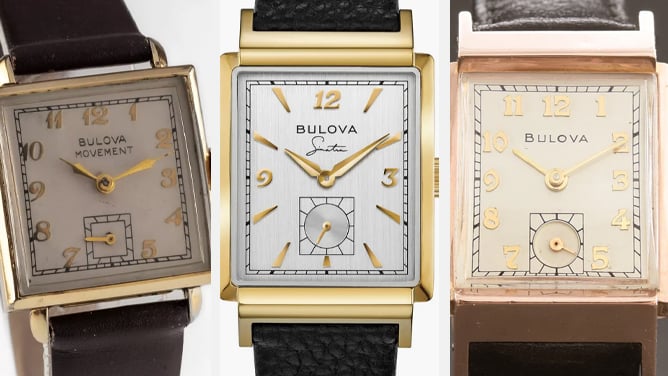
Macaulay ‘Mike’ Connor’s Watch in ‘High Society’
Here’s great news if you want to emulate Frank Sinatra’s style in this musical rendition of Philadelphia Story. Ol’ Blue Eyes, as Mike Connor, likely wears a highly attainable timepiece.
It’s a gold square-shaped watch on a black leather strap. Nope, not a Tank. I think it’s a B Model Bulova Douglas from the ’40s or ’50s. And if you can’t find your exact, desired Douglas on the eBays of the world, Bulova has a modern-day Frank Sinatra line. The My Way watch has all of the vintage charm, including that 3-9-12 dial, sans the vintage hassle.
Out of Tracy Lord’s three suitors, Connor is the sole commoner, and the most sartorially modern. His initial outfit is a sporty pink button-down. Compare that to old-monied, man-of-leisure C.K. Dexter Haven in a tieless white button-up, and George Kittredge’s uptight collar-pinned suit.
Even Connor’s black-tie jacket lacks silk accents, though he follows dress codes throughout the film in an attempt to fit in. Note his white pocket square against a black tie.
It makes sense that he’d choose an in-vogue tank style. Though a Cartier may be a bit dear for a reporter’s salary, a vintage Bulova, from the luxury B line, isn’t.
An out-of-universe explanation? Bulova sponsored The Frank Sinatra Show on ABC.
If you’re dead set on vintage, here’s some insider info, courtesy of my friends at Citizen-Bulova. Models made in 1946–1948 are marked so on the watch back (46, 47, 48). 1949 models have a J9 engraving. Nineteen-fifties watches are marked with the letter L, followed by the year’s last digit, so L0 for 1950. I also noticed that Douglas models with serial numbers starting with 876 often exhibit that 3-9-12 dial.
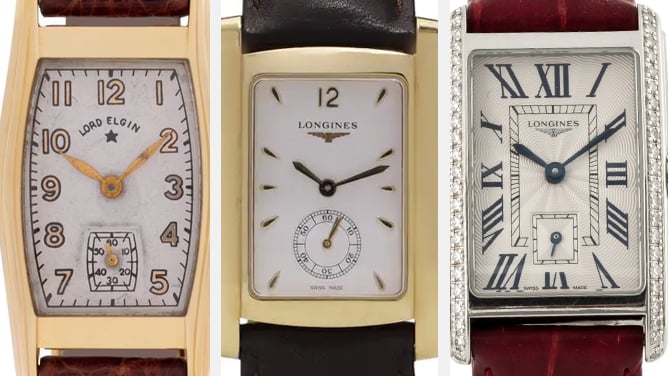
Rick Blaine’s Watch in ‘Casablanca’
Most agree that Humphrey Bogart’s Rick Blaine wears a Longines in Casablanca, possibly history’s most romantic film. The watch’s only obvious characteristic is its era-fitting square shape.
I don’t agree with the common theory that it’s a Longines Roosevelt though. Sure, the lugs are there, and FDR was president during the 1942 film, but most Longines Roosevelts are from the ’50s. Moreover, during Blaine’s conversation with Captain Louis Renault, the light hits it in a way that suggests the crystal is round, not flat.
I believe it’s a 1939 Lord Elgin watch, possibly reference X151105.
And though the film is colorless, I’m confident the timepiece is yellow gold. After all, war-neutral Blaine is a capitalist. Another layer? He also has a true north—a heart of gold, if you will.

